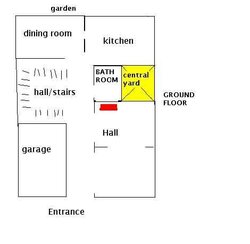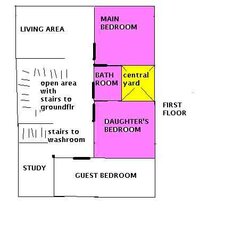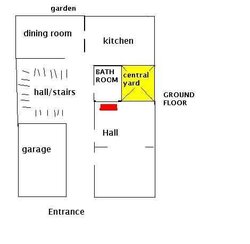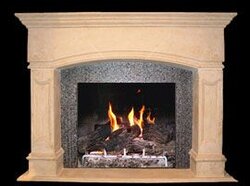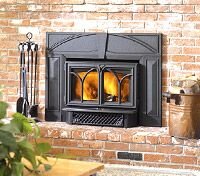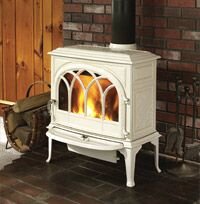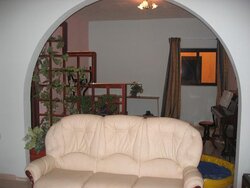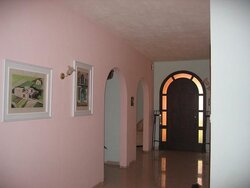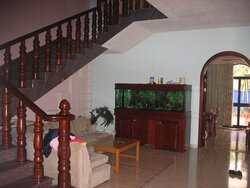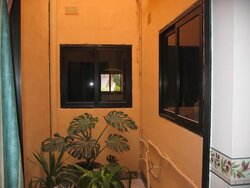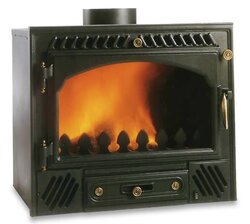- Jan 31, 2007
- 79
Hi, I am very new to this topic and I'd appreciate any advice I can get.
We're planning to buy a fireplace for the house we've been living in these last four years. The house is quite large - downstairs it's 'open-plan'. I live in Malta (so please excuse my English!) so another problem is that it's really not that common for houses to have fire places, but ours does get uncomfortably chilly in winter and considering very hefty utility bills it's also cheaper in the long run.
Our plan was to have the fireplace in the hall downstairs, we set our minds on a woodburning one, the one with the glass, and the power is 16KW. Now the issue is that we wanted a system where with one main fireplace downstairs we could also have pipes (I don't know if that's the correct term) and a blower, to heat these rooms upstairs: daughter's bedroom which is the one directly above the fireplace, bathroom which is next door, and the main bedroom which is ensuite to the bathroom.
Now my first problem is that our dealertold us not to expect any great heat to the upstairs rooms, and he was of the idea that we purchase separate fireplaces for those rooms.... He keeps insisting that he doesn't have confidence that we'd be satisfied. But I'm sure in other parts of the world where it's colder this system is not unheard of. And I somewhat think that he isn't confident because his largest fireplace of 16KW isn't large enough for the job... but then I don't understand much about fireplaces either.
My husband's idea was that since all the rooms have access to the central courtyard, we could have the chimney go up the courtyard, and also the vent pipes would be outside in the courtyard, insulated. That way all stuff will be in the courtyard and the inside of the house would be neater. The longest vent pipe would be the one leading to the main bedroom, probably around 10 or 12 feet long.
However the dealer (who's still insisting that the system won't be that great) suggests that we pass the chimney from the inside, up through daughter's room, up through washroom floor and through washroom roof. That means we have to pierce a hole in 3 floors rather than one hole through the wall into the courtyard. But he says having the chimney inside means more heat, and will automatically heat daughter's room and washroom without the need for separate vents. However, if we do it from the inside like he says, the vent pipes to heat bathroom and main bedroom will have to pass above the bathroom soffit (false roof), with the vents being near the roof which doesn't sound much like efficient heating to me.
Any ideas or help please?
Btw the bedrooms are both 16"x18ft, bathroom is 12"x6.
Thanks!
We're planning to buy a fireplace for the house we've been living in these last four years. The house is quite large - downstairs it's 'open-plan'. I live in Malta (so please excuse my English!) so another problem is that it's really not that common for houses to have fire places, but ours does get uncomfortably chilly in winter and considering very hefty utility bills it's also cheaper in the long run.
Our plan was to have the fireplace in the hall downstairs, we set our minds on a woodburning one, the one with the glass, and the power is 16KW. Now the issue is that we wanted a system where with one main fireplace downstairs we could also have pipes (I don't know if that's the correct term) and a blower, to heat these rooms upstairs: daughter's bedroom which is the one directly above the fireplace, bathroom which is next door, and the main bedroom which is ensuite to the bathroom.
Now my first problem is that our dealertold us not to expect any great heat to the upstairs rooms, and he was of the idea that we purchase separate fireplaces for those rooms.... He keeps insisting that he doesn't have confidence that we'd be satisfied. But I'm sure in other parts of the world where it's colder this system is not unheard of. And I somewhat think that he isn't confident because his largest fireplace of 16KW isn't large enough for the job... but then I don't understand much about fireplaces either.
My husband's idea was that since all the rooms have access to the central courtyard, we could have the chimney go up the courtyard, and also the vent pipes would be outside in the courtyard, insulated. That way all stuff will be in the courtyard and the inside of the house would be neater. The longest vent pipe would be the one leading to the main bedroom, probably around 10 or 12 feet long.
However the dealer (who's still insisting that the system won't be that great) suggests that we pass the chimney from the inside, up through daughter's room, up through washroom floor and through washroom roof. That means we have to pierce a hole in 3 floors rather than one hole through the wall into the courtyard. But he says having the chimney inside means more heat, and will automatically heat daughter's room and washroom without the need for separate vents. However, if we do it from the inside like he says, the vent pipes to heat bathroom and main bedroom will have to pass above the bathroom soffit (false roof), with the vents being near the roof which doesn't sound much like efficient heating to me.
Any ideas or help please?
Btw the bedrooms are both 16"x18ft, bathroom is 12"x6.
Thanks!


 . An interior chimney will burn better and cleaner and the mass of brick will radiate some heat back into the living space. Can you give us a make an model of the unit that he is recommending?
. An interior chimney will burn better and cleaner and the mass of brick will radiate some heat back into the living space. Can you give us a make an model of the unit that he is recommending?